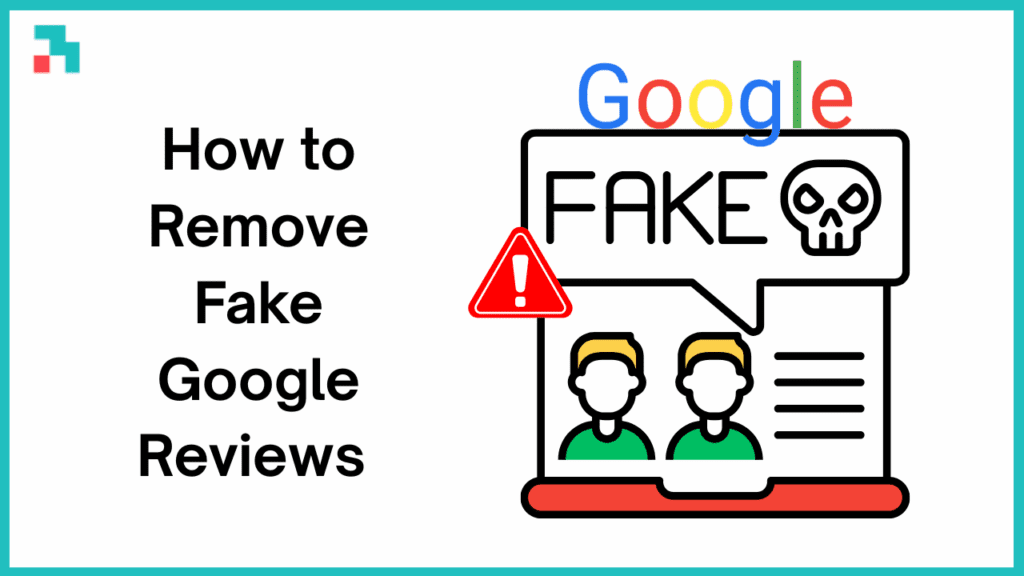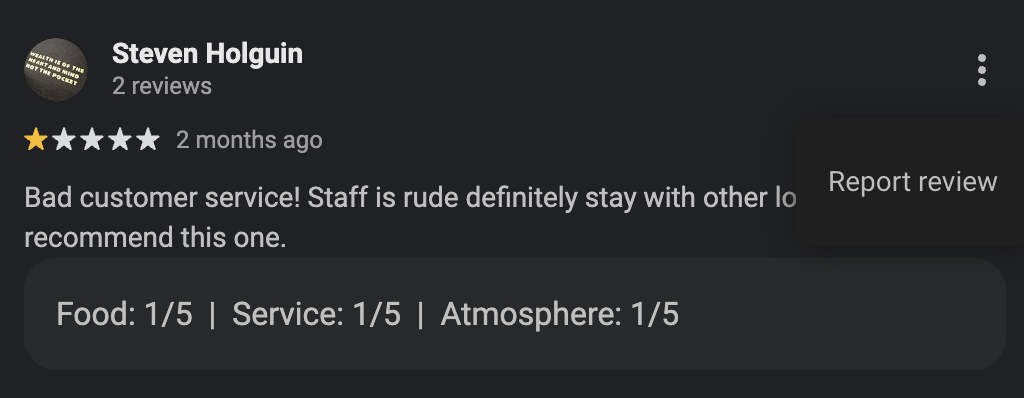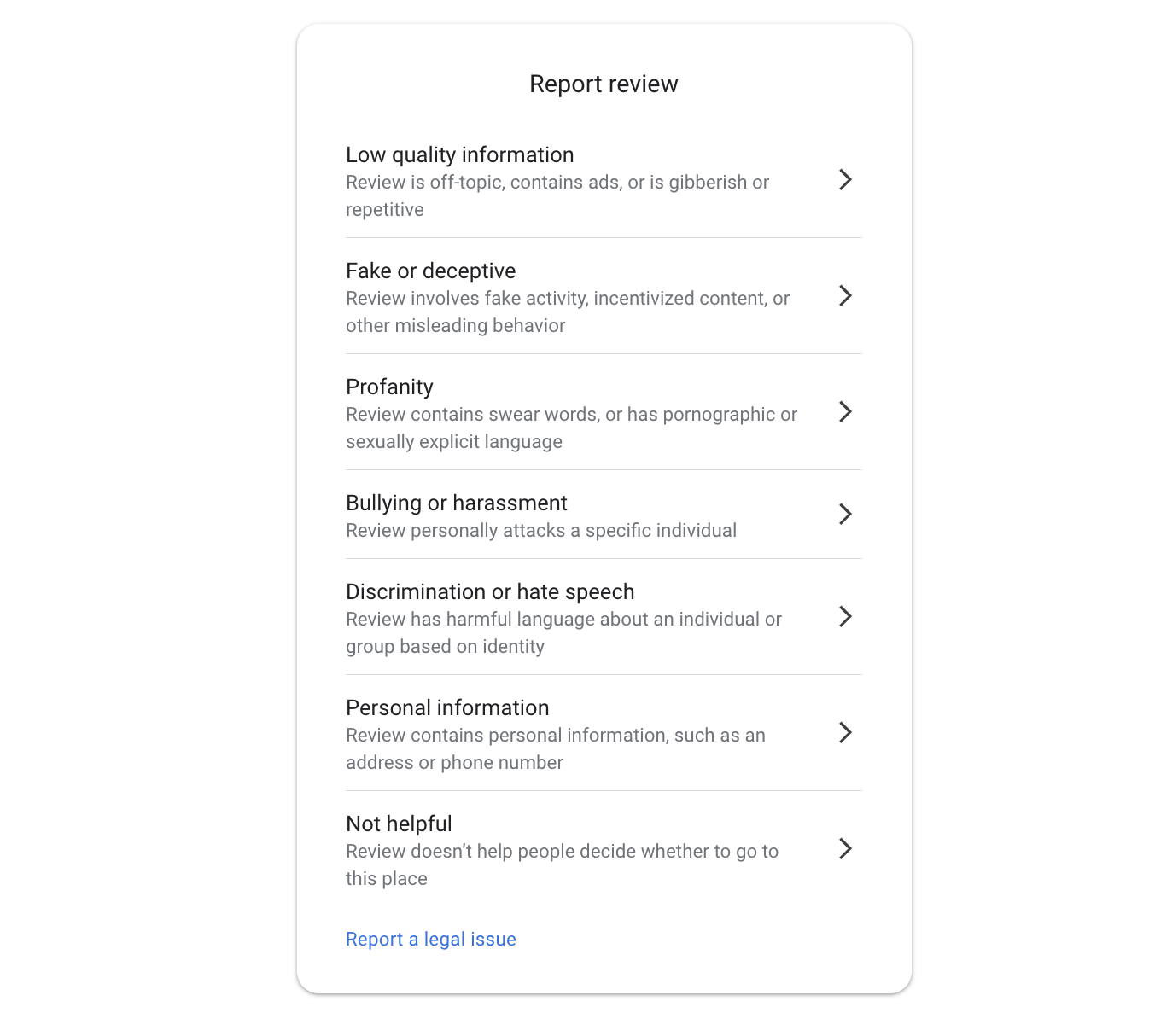How to Report and Remove Fake Google Reviews: A Step-by-Step Guide to Protect Your Business in 2025

Quick Answer:
To remove a fake Google review, log in to your Google Business Profile, find the review, and click the three dots to “Report review.”
Choose the violation reason (like spam or conflict of interest) and submit. Google will review your request, and if it is found to be false or in violation of their policies, the review will be removed usually within a few days.
Table of Contents
Introduction
If you run a business today, your Google Business Profile is one of your biggest assets.
Customers trust reviews as much as personal recommendations, and a few bad ones can make or break your reputation.
The problem? Not every review is real. Fake Google reviews are on the rise, and they can harm your credibility, rankings, and revenue if you don’t act quickly.
The good news is, you can fight back.
In this guide, we’ll break down everything you need to know about spotting fake reviews, reporting them, and protecting your business reputation for the long haul.
What Are Fake Google Reviews?
Fake Google reviews are reviews left on your Google Business Profile (GBP) that don’t come from genuine customer experiences.
They can be positive or negative, but the intent is the same: manipulate perception.
Sometimes competitors want to drag your business down, while other times shady services or bots flood profiles with glowing reviews to boost fake credibility.
Unlike real customer feedback, fake reviews don’t provide helpful insights, which is a bummer.
Instead, they mislead potential customers and Google’s algorithm. Left unchecked, they can directly impact your local SEO rankings, trustworthiness, and bottom line.
For these reasons, it’s vital that you take action promptly if you believe a review is fake.
5 Possible Sources of Fake Google Reviews

Understanding what to look out for and why people leave fake reviews on Google is important.
1. Competitors
Your biggest rival across town might not just compete with pricing or quality: they may try to attack your reputation directly. This would be unfortunate, but it can happen.
Competitors sometimes leave negative reviews on your profile, claiming bad service or poor product quality even though they’ve never interacted with your business to deter clients from choosing you over them.
Example: Imagine you own a local coffee shop. Out of nowhere, you notice three new one-star reviews all posted within a few hours or even a day, each ambiguously describing things like, “Terrible coffee” or “Don’t waste your time.” When you take a closer look, you realize they were all left by accounts that have also reviewed your competitor, but left incredibly positive comments.
They may not always be left by the same user, but take a look and keep competitors in mind if something seems out of place.
2. Disgruntled Customers
Not every unhappy customer leaves a fair or honest review.
Sometimes, people exaggerate their bad experience, add false details, or even invent a story to “get back at you” or feel better about themselves.
Dissatisfied customers may also recruit friends or family to pile on negative reviews as a form of retaliation if they are that upset.
Example: A customer upset about not getting a refund for a non-refundable service might leave a detrimental one-star review, then ask a couple of their friends to leave similar bad experience reviews, even though they have never even interacted with or visited your business.
Keep in mind that it is important to respond to negative Google reviews while you are in the process of removing them. In case anyone sees them, at least you have a response defending yourself or attempting to resolve the supposed issue.
3. Paid Services
Unfortunately, fake review companies exist, and they make money selling positive or negative reviews in bulk.
Some businesses purchase these services to inflate their own ratings, while others use them to attack competitors.
Paid reviews from shady companies often sound robotic, lack personal details, and appear in large batches over a short period.
If you work with paid Google review services, do make sure they have a good reputation and provide something of value.
Example: You notice 15 new five-star reviews appear on your competitor’s profile overnight. All the reviews all say something generic with no details. This is a red flag for a low-quality, purchased review package.
4. Bots and Automated Tools
Bots can pop out hundreds of fake reviews quickly, which makes them extra tedious for Google and businesses’ credibility.
These automated programs often recycle the same phrases or copy/paste text across multiple business profiles.
While Google actively works to filter out bot reviews, some still slip through, especially if they’re mixed in with real ones left by actual people.
Example: Your business suddenly gets inundated with 20 identical one-star reviews within a single day. Each review contains the exact same sentence: “Worst experience ever.” That’s almost certainly the work of bots or automation.
5. Friends, Family, or Employees
Sometimes fake reviews come from people who actually want to help.
An enthusiastic employee, supportive family member, or well-meaning friend might leave a glowing five-star review, even if they’ve never purchased your product or used your service.
While their intentions have your best interest in mind, Google still considers this inauthentic.
Example: A small business owner notices several reviews written by relatives and employees, each one giving five stars but offering no real details. While these reviews look positive, they can damage credibility if customers (or Google) realize what’s going on.
6 Potential Reasons People Leave Fake Google Reviews
Fake Google reviews don’t just appear out of the blue; there’s usually a motive behind them.
Now that we know who could be behind them, we need to think about the why.
This helps you spot patterns and take action faster.
Here are six common reasons people leave fake reviews on Google:
1. Reputation Management and Local SEO
Some businesses try to cheat the system by flooding their profile with glowing 5-star reviews.
Why? They think more positive Google reviews will instantly boost their ranking, increase their star rating, and make them look more trustworthy.
While this tactic can temporarily sway customers, it usually backfires once real buyers notice the mismatch between the hype and the actual service.
If you buy Google reviews, make sure the company is reputable and can provide you with authentic growth for your GBP reputation.
Looking For Google Reviews? Claim your Discount Below
2. Shady Competitive Tactics

Not every competitor plays fair. Sometimes, rival businesses post negative reviews to drag down your reputation and make themselves look better by comparison.
This can be especially true if you are outperforming them in local SEO rankings or they have a vendetta against you.
They may also encourage friends or employees to do the same.
These underhanded tactics are designed to sway potential customers away from you, and unfortunately, this approach can work in their favor if you don’t take action quickly.
If you have more Google reviews than your competitor, you may be a target.
3. Financial Incentives
There’s an entire underground market for fake reviews. People get paid to post reviews in bulk, often with copy-and-paste text.
In some cases, reviewers are offered discounts, freebies, or even gift cards in exchange for leaving feedback.
Because there’s money or free stuff involved, these reviews spread fast, and they rarely reflect any real customer experience.
4. Revenge or Malice
Sometimes fake reviews come from personal grudges. Maybe an ex-employee felt wronged, or a customer was unhappy with a refund policy.
Instead of moving on, they take their anger out online. These reviews often exaggerate details, make false claims, or tell one-sided stories that can scare off potential customers.
5. Influence and Manipulation
Reviews are super important because people trust them.
A single positive review can make someone click “Buy Now,” or visit your business over another. On the contrary, a single angry review can make someone walk away or choose someone else.
Some individuals (or businesses) exploit this by posting fake reviews to control the opinion in their market.
For example, a fake positive review might try to make a new product look popular, while a fake negative one could aim to kill buzz before a launch.
6. Scams
Scammers use fake reviews to trick people or pressure businesses.
For example, some will post a series of damaging reviews, then contact the business demanding payment to “fix” the problem.
Others create fake positive reviews for their own scam websites, hoping customers will trust them and hand over money.
In both cases, the fake review isn’t just annoying — it’s part of a bigger scheme to profit off dishonesty.
How To Spot Fake Google Reviews
Spotting fake Google reviews is part detective work, part common sense.
While there is no 100% formula for catching fake reviews on Google, there are some clues that are a good indicator.
Watch for these red flags:
- Generic language: Reviews that say nothing specific about your business, like “Great place!” or “Terrible service,” with no details.
- Timing patterns: A sudden flood of 5-star or 1-star reviews in a short time frame.
- No record of the reviewer as a patron of your business: If you can’t match the name or situation with an actual customer or transaction, it’s suspicious.
- Repetitive wording: Bots often post similar phrases across multiple reviews.
- Reviewer activity: Click on the reviewer’s profile. If they’ve left hundreds of reviews in random cities or industries, it’s likely fake. On the other hand, if they only have 1 review and an anonymous, underdeveloped profile, it could also be a fake.
How To Remove a Fake Review From Google
Unfortunately, you can’t just “delete” a fake Google review. You need to follow Google’s process. Here’s the step-by-step way to handle it:
- Log in to your Google Business Profile.
Find the fake review under your reviews section. - Flag the review.
Click the three dots next to the review and select “Report review.” - Choose the right violation reason.
Google provides options like spam, conflict of interest, off-topic, harassment, or hate speech. Pick the one that best applies. - Submit your request.
Once reported, Google will review it against their content policy. - Wait for a decision.
This can take several days. If Google agrees, the review will disappear. - Escalate if needed.
If the review is particularly damaging, you can contact Google Business Profile support directly or seek legal options for defamation.
Pro tip: Always respond professionally to suspicious reviews while waiting for removal.
This shows customers that you care and gives context for anyone who reads the fake review in the meantime.
FAQs About How To Remove Fake Reviews From Google

Have a few lingering questions about removing fake Google reviews? There are a few common FAQs to review here.
Q: How do I remove fake reviews from Google?
You can’t delete them yourself, but you can report them through your Google Business Profile.
Q: What happens when you report fake reviews on Google?
Google’s moderation team reviews the flagged content. If it violates policy, they’ll remove it.
Q: Can fake Google reviews hurt my local SEO?
Yes. Fake negative reviews can lower your rating, while fake positives from competitors may push them ahead in local rankings.
Q: How long does it take for Google to remove a fake review after reporting it?
It usually takes a few days to a week, but in some cases, it can take longer.
Q: Can I remove negative reviews that are not fake?
No. If a review is genuine but negative, the best approach is to respond professionally and use the feedback to improve.
Q: What evidence do I need to provide to Google to prove a review is fake?
Customer records, transaction history, and any other documentation that proves the reviewer never interacted with your business.
Q: Will responding to fake reviews help my local SEO?
Yes. Responding shows engagement and professionalism, which helps customer trust and can improve your profile activity.
Q: What legal actions can I take against fake reviewers?
If fake reviews cause measurable harm, you may consult a lawyer about defamation or business interference claims.
Q: How can I prevent fake reviews from affecting my business?
Actively monitor your reviews, report suspicious ones quickly, and encourage genuine customers to leave authentic feedback.
Q: Can any tools help me get a fake review removed from Google?
There are a range of similar tools that can help you track your local SEO impact and spot suspicious review patterns, but removal must still go through Google.
Wrapping Up: Fake Google Reviews Removal
Fake Google reviews are frustrating, but you don’t have to let them control your business reputation if you act quickly.
By learning how to spot them, report them, and respond strategically, you can protect your credibility and keep your customers’ trust.
Remember: reviews are powerful! Even fake ones can shape how people view your brand. Stay proactive, document everything, and never hesitate to escalate to Google or even legal action when necessary.
Turn Customer Feedback Into Strategy!
At the end of the day, you can’t stop every fake review, but you can drown them out with authentic feedback.
Encourage your happy customers to leave reviews regularly, respond to every review with professionalism, and use real feedback to guide improvements.
This is the best way to approach Google review management.
You can also use QR code for Google review to easily direct customers to leave positive reviews right after service or a purchase.
Think of fake Google reviews as background noise. They’re annoying, but with the right strategy, they won’t drown out the genuine voices that matter most: your satisfied customers.


